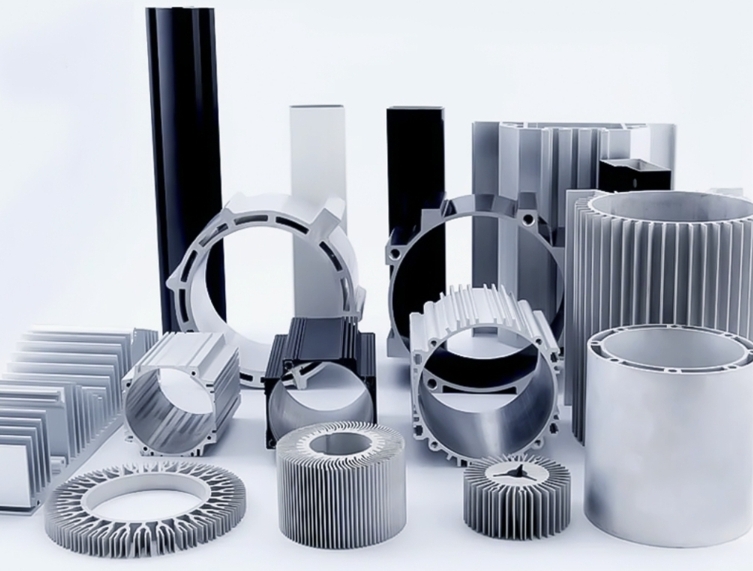Extruded aluminum plays an important role in countless industries, offering remarkable versatility, strength, and design flexibility. From anodized aluminum for corrosion resistance to custom aluminum extrusions tailored to specific applications, the aluminum extrusion process is a cornerstone of modern manufacturing. But how exactly is extruded aluminum made? Let’s delve into the details of this fascinating process while exploring its wide range of applications and benefits.
At its core, extrusion is a process where aluminum is forced through a die to create specific cross-sectional shapes. This technique transforms raw aluminum into aluminum extrusion profiles used for various industrial and architectural purposes. The process begins with an aluminum billet, typically made of 6061 aluminium alloy, known for its corrosion resistance and mechanical strength.

The aluminum billet is heated to around 900°F–925°F to make it malleable but not molten. For high-strength requirements, alloys like 6061 T6 aluminum are commonly used because of their exceptional strength-to-weight ratio.
The heated billet is placed in an extrusion press, where it is pushed through a die. The die determines the shape of the extrusion profiles, from simple shapes like an aluminum bar to complex designs like 8020 aluminum extrusion used in modular systems.
The extruded aluminum is rapidly cooled with water or air, then stretched to remove any warping, ensuring uniformity in the final product's cross-sectional dimensions.
Once stretched, the extrusion is cut to desired lengths, preparing it for further processes like surface finishing or machining.
Extruded aluminum is often enhanced with various surface finishes for aesthetic or functional purposes. The most popular finish is anodized aluminum, which provides an attractive appearance while significantly improving corrosion resistance. Other finishes include powder coating and mechanical polishing, depending on the application.
Extruded aluminum is used in a variety of industries due to its adaptability and durability. For instance:
The aluminum extrusion production process offers numerous benefits, including:
Extruded aluminum, crafted through the innovative extrusion production process, underpins many of the technologies and structures we rely on today. Whether it’s a 6061 aluminium alloy profile for structural integrity or a sleek anodized aluminum finish for visual appeal, this material continues to evolve with modern engineering demands.
By combining practical designs with advanced manufacturing techniques, aluminum extrusion empowers industries with solutions that are lightweight, durable, and corrosion-resistant—demonstrating its lasting significance in modern manufacturing.
Explore the possibilities of aluminum extrusion and discover how this process transforms simple aluminum billets into solutions that shape the future.